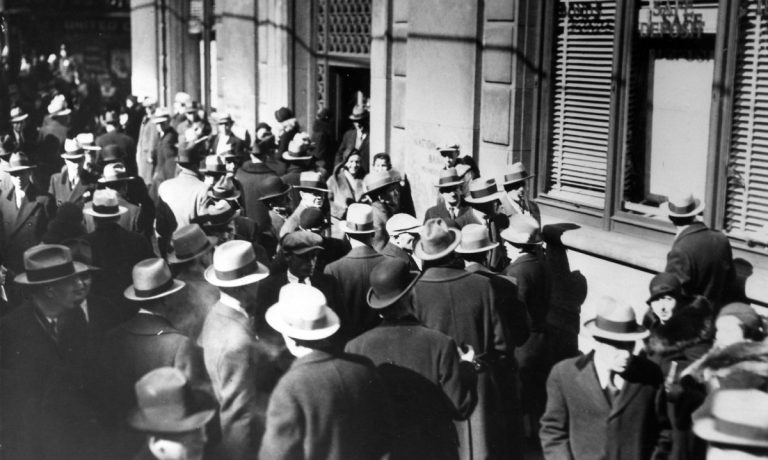The Week That Americans Watched a Bank Run in Real Time

Back in 1960s through the 1980s, there was a TV show titled “That Was the Week that Was.”
The program was, largely, political satire. But the title itself lends itself well to the act of taking stock of what went on these past seven days.
And with our rearview mirror firmly in place, the week that was … wasn’t pretty.
This was the first week that many of us — at least younger generations — got our first glimpses into what a bank run looks like, up close. The 2008 financial crisis, after all, is a decade and a half old.
And because this is the 21st century, it wasn’t like “It’s a Wonderful Life,” where people huddled on street corners urging each other to get their cash — bills and coins! — out of the bank and lines thronged the sidewalks.
This time around, as Silicon Valley Bank shuttered, as Signature Bank fell, word of mouth spread like wildfire, Twitter being the “line” that connected us all. And in reference to the fact that all things have gone digital, consider the fact that sites such as TechCrunch reported that in the midst of the SVB crisis, some account holders had trouble getting access to their money because the site was down, because apps and browsers and online portals were not functioning.
Yes, there were of course reports and photos of founders and account holders queuing up at the physical branches trying (in vain) to get access to their money.
But one imagines the pain and angst of hitting the “refresh” button over and over again while no one, really, knew what was truly happening.
A Lifetime Lived in a Week’s Time
Leading into this week: March 8 feels like a lifetime ago, when Silvergate Capital, the bank focused on crypto, sprinted into liquidation. Then came Silicon Valley Bank’s rattling of investors and account holders, sparking that run, as it tried to raise billions of dollars in capital to offset a dwindling in deposits … and then the regulators took over.
The run spread to Signature Bank as depositors sought to get their money out — and then that bank was suddenly in the regulators’ hands too.
As this past week dawned, we’ve seen the lingering aftershocks, where the FDIC has made an example of making an exception of paying back uninsured depositors, and a fund has been set up to help banks make their depositors whole.
Some banks, anyway.
As reported here, Treasury Secretary Janet Yellen told lawmakers this past week that deposits beyond the Federal Deposit Insurance Corporation (FDIC) insured limit of $250,000 per account would only be covered in the event that “a failure to protect uninsured depositors would create systemic risk and significant economic and financial consequences.” The key issue here, of course, is just which banks would give rise to that systemic risk — and which would not. The latter banks? Well, presumably, they’d be left high and dry, so to speak.
So, in tandem with that guessing game, regional banks have continued to slip, and we saw yet another wave of worries over bank runs mark the end of the week. On Thursday (March 16), 11 larger banks pumped $30 billion of liquidity into First Republic Bank. The bank’s CEO has hailed the move as a “vote of confidence” in the bank and in the banking system in general.
As Karen Webster observed at the beginning of the week, “There will be backlash in the aftermath of the SVB and Signature Bank failures, hearings on Capitol Hill and everywhere else in the world.”
In the meantime, there’s a Catch 22 in place. If injections of liquidity become commonplace in an effort to shore up confidence, the fact that banks are furiously backstopping one another may be a signal event that erodes confidence. Rinse, lather, repeat. The question becomes what the better alternative might be.
That week that was gives way to the week that will be: And while we’re in the weekend, best to catch up on your sleep — the days ahead are certain to be topsy-turvy.